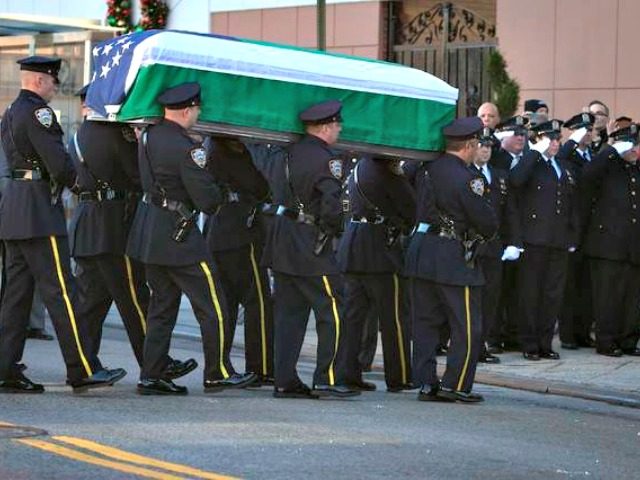The Department of Justice, Department of Homeland Security, and Federal Communications Commission (FCC) jointly announced the rollout of a “Blue Alert” program mandated by Congress in 2014 at a press conference Friday.
The National Blue Alert Network will work similarly to the more well-known AMBER Alert system. Instead of missing children, Blue Alerts will warn the public about violent offenders who have killed, attacked, or pose a danger to law enforcement officers and get the word out about officers who are missing.
Acting Associate Attorney General Jesse Panuccio explained the basic concept as he unveiled the program:
Blue Alerts are operationally similar to AMBER Alerts. They can be broadcast on the radio, cell phones, and other wireless. Like AMBER Alerts, which send information about missing children to the public, they provide physical descriptions, vehicle information, and other identifying characteristics, information law enforcement uses to keep the public safe and that can be used to support their own safety as well.
The legislation authorizing the program was named for fallen New York City police officers Rafael Ramos and Wenjian Liu and passed in the aftermath of their ambush-murder in 2014. The perpetrator, Ismaaiyl Abdullah Brinsley, who killed himself shortly after his crime, reportedly made clear on social media his intention was to kill police officers in retaliation for the deaths of Mike Brown and Eric Gardner. Panuccio also referenced President Donald Trump’s executive order to prevent violence against law enforcement, written largely in response attacks like Brinsley’s.
Acting Director of Immigration and Customs Enforcement (ICE) Thomas Homan also spoke at the press conference and emphasized the need for the program given the rash of anti-police motivated attacks in the last few years:
It’s impossible to measure the impact on our communities when an officer, agent, or investigator is killed in the line of duty and especially disturbing when our brothers and sisters in uniform are targeted simply because they chose to serve and protect, to make all of us safer and more secure. By quickly communicating that an officer is missing, or that there is an imminent and credible threat to kill or seriously injure a law enforcement officer, this new alert system may povide the extra minute notice we need to catch the bad guy.
National Blue Alert builds on the work of 27 states who already have some version of the Blue Alert concept. The new federal program will be administed by the Office of Community Oriented Policing Services (COPS Office) under guidelines developed by the FCC. The new rules are meant to provide best practices for the use of cell phone, radio, and other communications infrastructure to best get the message out and allow interoperation of these various state systems. FCC Commissioner Ajit Pai was on hand to explain his agency’s role in the new federal effort:
We know some states have their own Blue Alert Programs that use various methods to issue warnings. Our hope is that our rules will spur and support the development of a coordinated and nationwide framework that states can adopt with ease.
Pai also pointed to other FCC projects to assist law enforcement, including the developing “FirstNet” broadband network for first responders and working with corrections agencies to detect and combat the use of contraband cell phones in America’s prisons and jails.
The Justice Department also issued a press release on the new system.

COMMENTS
Please let us know if you're having issues with commenting.